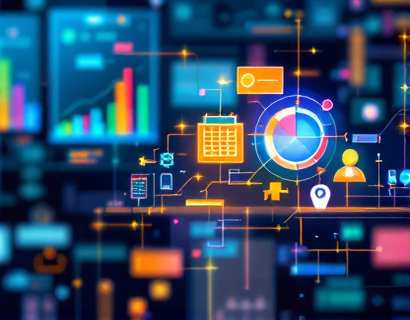AI-Powered Healthcare Insights: Verified Chat for Specialized Medical Knowledge
In the rapidly evolving landscape of healthcare, the integration of artificial intelligence (AI) has opened new avenues for accessing specialized medical knowledge. AI-powered chat interfaces are at the forefront of this transformation, providing users with reliable insights into healthcare services, industry trends, and medical education. This article explores the benefits of AI-driven chat interfaces, focusing on their ability to deliver verified information to healthcare professionals, medical students, parents, educators, and the general public. Additionally, we will discuss the importance of creating a child-friendly version of these platforms, ensuring that young learners can safely explore essential medical knowledge.
The Role of AI in Healthcare
Artificial intelligence has become a pivotal force in healthcare, enhancing the way information is processed, analyzed, and disseminated. AI algorithms can sift through vast amounts of data, identifying patterns and insights that may not be immediately apparent to human practitioners. This capability is particularly valuable in specialized fields where up-to-date knowledge is crucial for effective decision-making.
AI-powered chat interfaces serve as a bridge between complex medical information and users seeking clarity. By leveraging natural language processing (NLP), these systems can understand and respond to user inquiries in a conversational manner, making specialized knowledge more accessible to a broader audience.
Benefits of AI-Powered Chat Interfaces
1. Accessibility of Specialized Knowledge
One of the primary advantages of AI-driven chat interfaces is their ability to provide instant access to specialized medical knowledge. Healthcare professionals can quickly retrieve information about the latest research, treatment protocols, and clinical guidelines, enabling them to make informed decisions in real-time.
Medical students benefit from this technology as well, using AI chat interfaces to supplement their learning. By asking questions and receiving accurate answers, students can deepen their understanding of complex topics and prepare for exams more effectively.
2. Content Verification for Accuracy
In an era where misinformation can spread rapidly, ensuring the accuracy of medical information is paramount. AI-powered chat interfaces can be designed to verify content before it is presented to users. By cross-referencing multiple reputable sources, these systems can provide reliable insights that healthcare professionals and the public can trust.
3. Child-Friendly Access to Medical Knowledge
Creating a child-friendly version of AI chat interfaces is essential for fostering early interest in healthcare and medical education. By simplifying complex concepts and using age-appropriate language, these platforms can engage young learners while ensuring their safety. Parents and educators can feel confident that children are accessing verified information that is suitable for their age group.
How AI Chat Interfaces Work
AI chat interfaces utilize advanced algorithms to process user queries and generate responses. The underlying technology typically involves several key components:
- Natural Language Processing (NLP): This technology enables the chat interface to understand and interpret user input, allowing for a more conversational interaction.
- Machine Learning: AI systems learn from user interactions, continuously improving their ability to provide accurate and relevant information over time.
- Data Sources: Reliable databases and medical literature are integrated into the system, ensuring that the information provided is up-to-date and evidence-based.
Applications in Healthcare
1. For Healthcare Professionals
Healthcare professionals can leverage AI chat interfaces to enhance their practice. Whether seeking information about a rare condition or looking for the latest treatment guidelines, these tools can save time and improve patient care. By having access to verified information at their fingertips, clinicians can make better-informed decisions, ultimately leading to improved patient outcomes.
2. For Medical Students
Medical education is rigorous, and students often face overwhelming amounts of information. AI chat interfaces can serve as a valuable study aid, allowing students to ask questions and receive instant feedback. This interactive learning approach can reinforce knowledge retention and help students grasp complex concepts more effectively.
3. For Parents and Educators
Parents and educators play a crucial role in shaping children's understanding of health and wellness. AI chat interfaces can provide them with reliable information to address common questions about child health, nutrition, and development. By having access to accurate resources, parents can make informed decisions regarding their children's well-being.
4. For the General Public
The general public often seeks information about healthcare services, preventive measures, and wellness tips. AI chat interfaces can empower individuals to take charge of their health by providing them with reliable insights. Whether someone is looking for information about vaccinations, healthy lifestyle choices, or managing chronic conditions, these platforms can serve as a valuable resource.
Ensuring Safety and Accuracy
As AI chat interfaces become more prevalent, ensuring the safety and accuracy of the information provided is of utmost importance. Here are some strategies to achieve this:
- Content Verification: Implementing a robust verification process that cross-references information from reputable medical sources can help maintain accuracy.
- User Feedback: Encouraging users to provide feedback on the information received can help identify inaccuracies and improve the system's performance.
- Regular Updates: Keeping the database current with the latest research and guidelines is essential for providing users with the most relevant information.
Creating a Child-Friendly Version
Developing a child-friendly version of an AI chat interface involves several key considerations:
- Simplified Language: Using age-appropriate language and avoiding medical jargon can help children understand complex concepts.
- Engaging Content: Incorporating interactive elements, such as quizzes and games, can make learning about healthcare fun and engaging for children.
- Safety Features: Implementing safety measures, such as content filters and parental controls, can ensure that children are accessing appropriate information.
Future of AI in Healthcare
The future of AI in healthcare is promising, with ongoing advancements in technology and data analytics. As AI chat interfaces continue to evolve, we can expect to see even more sophisticated systems that provide personalized insights based on individual user needs. This could include tailored health recommendations, reminders for preventive care, and even virtual health coaching.
Moreover, the integration of AI with telemedicine platforms can enhance remote patient care, allowing healthcare providers to access specialized knowledge while interacting with patients in real-time. This synergy between AI and telehealth can lead to more efficient and effective healthcare delivery.
Conclusion
AI-powered chat interfaces represent a significant advancement in the accessibility of specialized medical knowledge. By providing verified information to healthcare professionals, medical students, parents, educators, and the general public, these platforms are transforming the way we engage with healthcare. The development of child-friendly versions ensures that young learners can safely explore essential medical concepts, fostering a new generation of informed individuals. As we continue to embrace the potential of AI in healthcare, the possibilities for enhancing education, improving patient care, and promoting health literacy are limitless.











































